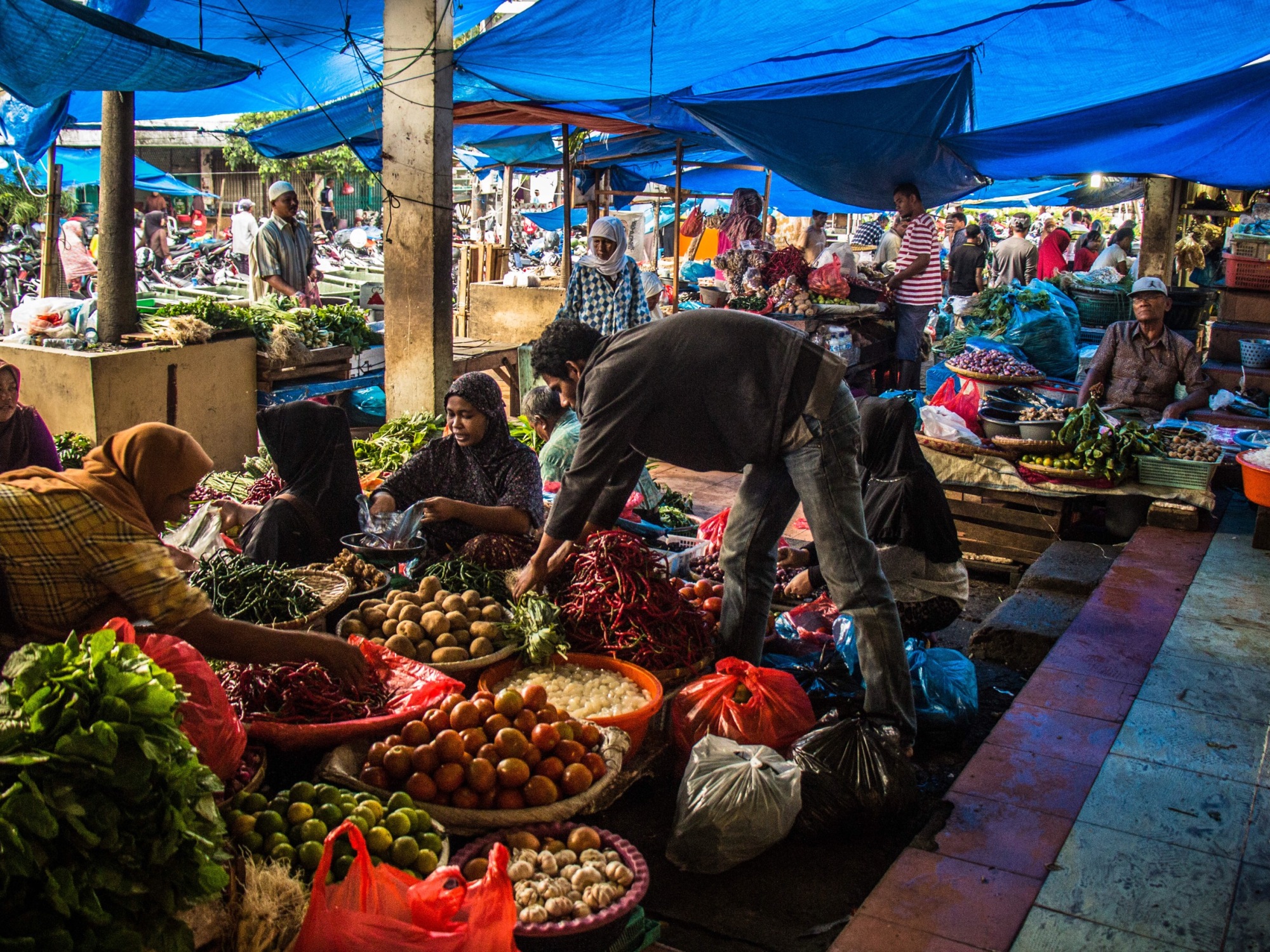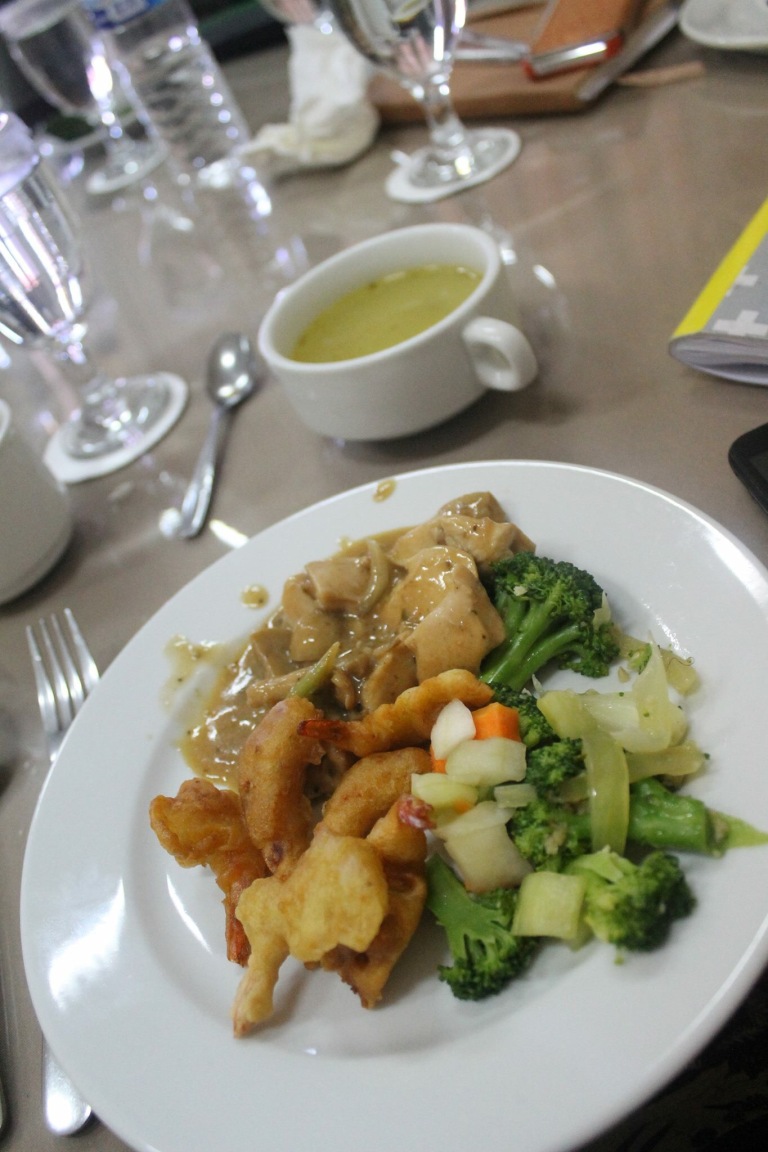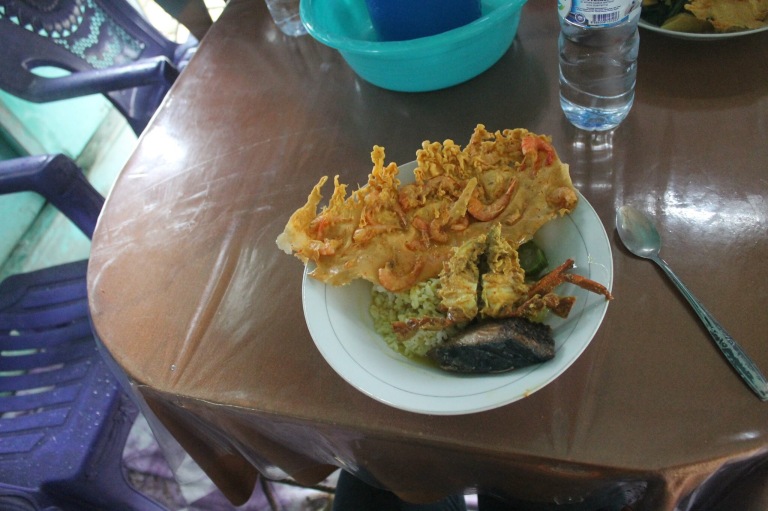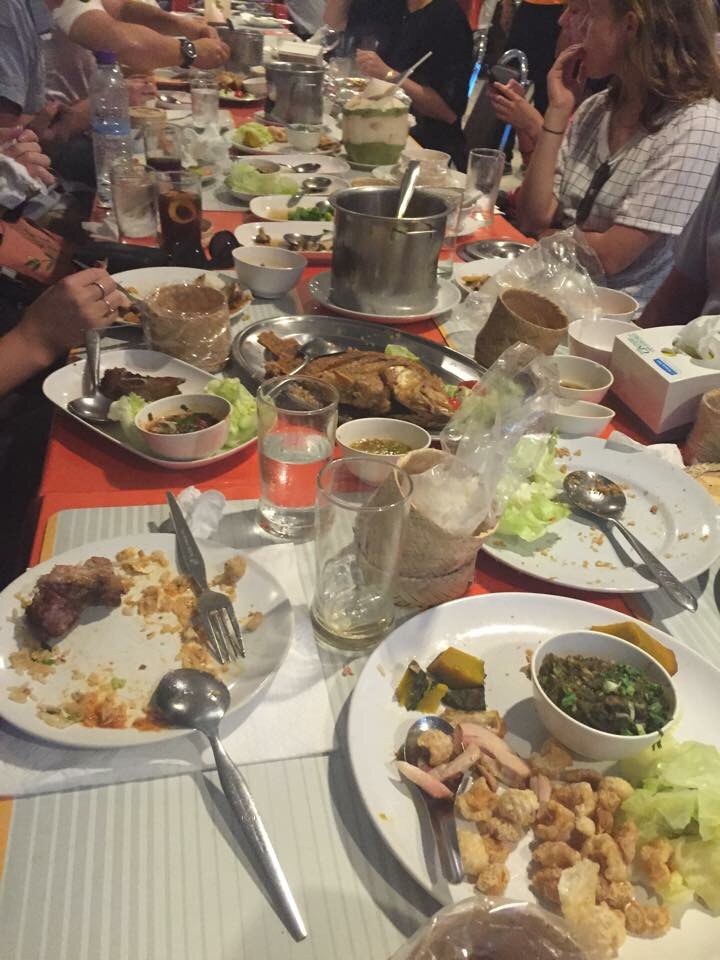Juan Manuel Parada – Masters Student in Screen Production (MFT)  Makan – อาหาร – Kai – Comida – Food
Makan – อาหาร – Kai – Comida – Food
Someone (probably Martin Mull) said that “Writing about music is like dancing about architecture”, and I think it also applies to food. No matter how skilled you are with words (and I am not), you cannot possibly convey the subtle aromas, the textures, the flavours, the temperatures and the sounds that comprise the experience of eating. Food says a lot about people. It speaks about history, culture and resources. Histories of economies, livelihoods, and power can be told through ingredients, cooking methods, flavours and even by the food absent from a particular menu. 


 Food also brings people together. None of us can live without eating, we have to do it everyday. And when we are travelling, it is very unpractical to bring your own food with you. So you end up depending on food made by different people, from different cultures, speaking different languages to survive. And even if you can’t say a word to each other, you can point to your mouth, you can smile and you can share a meal. The good thing is that people are proud of their food. They want to show you how delicious what they eat is. They want to see your face when the spices are too strong compared to what you know. They want to share your delight when you find something in their food you really love. They want to explain why they eat what they eat, they want to tell you stories about their mother’s cooking and their grandmother’s desserts. They want you to discover these flavours they love so much.
Food also brings people together. None of us can live without eating, we have to do it everyday. And when we are travelling, it is very unpractical to bring your own food with you. So you end up depending on food made by different people, from different cultures, speaking different languages to survive. And even if you can’t say a word to each other, you can point to your mouth, you can smile and you can share a meal. The good thing is that people are proud of their food. They want to show you how delicious what they eat is. They want to see your face when the spices are too strong compared to what you know. They want to share your delight when you find something in their food you really love. They want to explain why they eat what they eat, they want to tell you stories about their mother’s cooking and their grandmother’s desserts. They want you to discover these flavours they love so much. 
 And so these past few weeks have been an absolute expedition into the cuisines of Indonesia and Thailand. With varying degrees of satisfaction, our whole group has been adventurous at times, scared at others, and pleasantly surprised most of the time. So here is my brief report, flawed as it may be, to try and share through this digital medium a little of the pleasure I have got from this great gastronomic adventure.
And so these past few weeks have been an absolute expedition into the cuisines of Indonesia and Thailand. With varying degrees of satisfaction, our whole group has been adventurous at times, scared at others, and pleasantly surprised most of the time. So here is my brief report, flawed as it may be, to try and share through this digital medium a little of the pleasure I have got from this great gastronomic adventure.  Jakarta
Jakarta
First stop: everything is new.
Carts filled with food line the streets up and down. Colors and smells mix with each other, none of the words used to refer to any of the foods you see ring familiar. You just wander on the streets and awe at the diversity of it. After a while, you point your finger to one or two of them, and a friendly lady behind the cart smiles back at you. She serves whatever it is she is selling in a plate covered with a banana leaf, she adds rice on the side (there is ALWAYS rice on the side) and she lifts six fingers. Does she mean 6? 60? 600? or 6000? It is too soon for numbers and currencies to make any sense. You fumble with a bunch of notes from your wallet and she laughs. Nodding when you’re close to the right amount. You pay, smile back. Mumble your first ever “Terima Kasih” (“Thank you” in Bahasa Indonesia) and sit in tiny tables on the street, among the other people eating. It is fresh, sweet and spicy and overall wonderful. The lady laughs from the distance as she talks to others working around her.  After a few days, you learn the different words for fried (Goreng) and grilled (Bakar), you learn that Nasi means rice and it is everywhere. You start making sense out of numbers and money. The words for chicken, beef and shrimp become a little familiar. You start recognizing things you like to eat. Getting food becomes a little bit less daunting.
After a few days, you learn the different words for fried (Goreng) and grilled (Bakar), you learn that Nasi means rice and it is everywhere. You start making sense out of numbers and money. The words for chicken, beef and shrimp become a little familiar. You start recognizing things you like to eat. Getting food becomes a little bit less daunting.
Aceh
Indonesia is mostly muslim, but Aceh is almost exclusively so. No pork products are to be found anywhere. No alcohol of any kind. Instead of that, an abundance of seafood and fish populate the tables. And a rich, luxurious culture of coffee populates the streets. 
 You walk into a restaurant and your waiter brings tens of little plates. They look like samplers of different kinds of food. They are not meant for anyone in particular, the whole table is supposed to share. You eat fish, chicken, snail, shark, shrimp, octopus, beef. Each of them cooked in different sauces and spices. Some are crunchy and loud, some are chewy, some are soft. It feels like you are never getting through the amount of plates they bring, but they do diminish. And then they bring some more.
You walk into a restaurant and your waiter brings tens of little plates. They look like samplers of different kinds of food. They are not meant for anyone in particular, the whole table is supposed to share. You eat fish, chicken, snail, shark, shrimp, octopus, beef. Each of them cooked in different sauces and spices. Some are crunchy and loud, some are chewy, some are soft. It feels like you are never getting through the amount of plates they bring, but they do diminish. And then they bring some more. 

 And outside, in the scorching heat, glasses of ice cold juices and teas crowd the pushcarts. Sweet watermelon juice, refreshing cucumber and lemon ones, a thick, rich avocado juice which is closer to an ice cream is wildly popular.
And outside, in the scorching heat, glasses of ice cold juices and teas crowd the pushcarts. Sweet watermelon juice, refreshing cucumber and lemon ones, a thick, rich avocado juice which is closer to an ice cream is wildly popular.  “Enak” (delicious) becomes part of your daily vocabulary.
“Enak” (delicious) becomes part of your daily vocabulary.
Yogyakarta
Near the center of the island of Java all these flavours collide with each other. Sundanese food and it’s variety of vegetables and meats go along with its multi coloured rices. Makanan Padang (Food from padang), is in every corner. It is particularly spicy, but also layered and complex. Bitterness and sweetness hide in every mouthful behind the sting of the chillies. 
 There is even a restaurant whose whole menu is prepared out of mushrooms. All kinds of mushrooms. In a surprising variety of preparations, from curries and noodles to drinks and desserts.
There is even a restaurant whose whole menu is prepared out of mushrooms. All kinds of mushrooms. In a surprising variety of preparations, from curries and noodles to drinks and desserts. 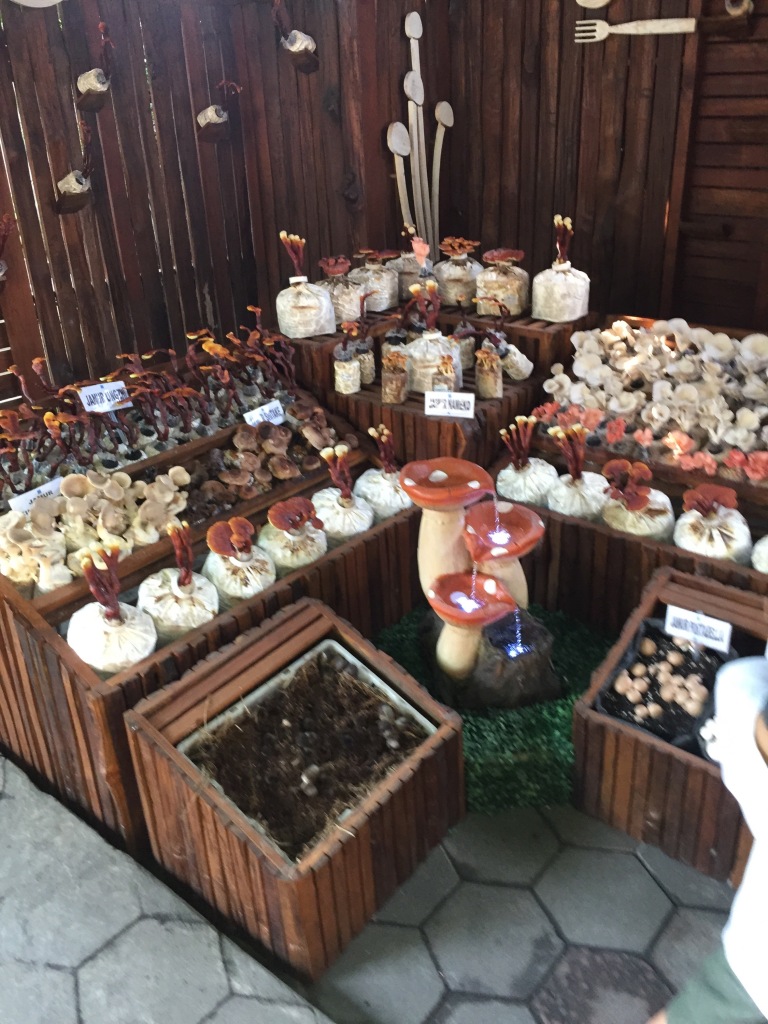 We also had the fortune of visiting during the month of Ramadan, which means people fast all day long, but at sunset, it is time for the breaking of the fast (Buka Puasa). Hungry people from all over the city rush to find something sweet to eat, something to hold you up until dinner. The markets get crowded, the stomachs growl. The best food is set up and ready to go for this scramble. The hunger quickly becomes satisfaction, smiles. And it is time to find a proper dinner with your family and friends.
We also had the fortune of visiting during the month of Ramadan, which means people fast all day long, but at sunset, it is time for the breaking of the fast (Buka Puasa). Hungry people from all over the city rush to find something sweet to eat, something to hold you up until dinner. The markets get crowded, the stomachs growl. The best food is set up and ready to go for this scramble. The hunger quickly becomes satisfaction, smiles. And it is time to find a proper dinner with your family and friends. 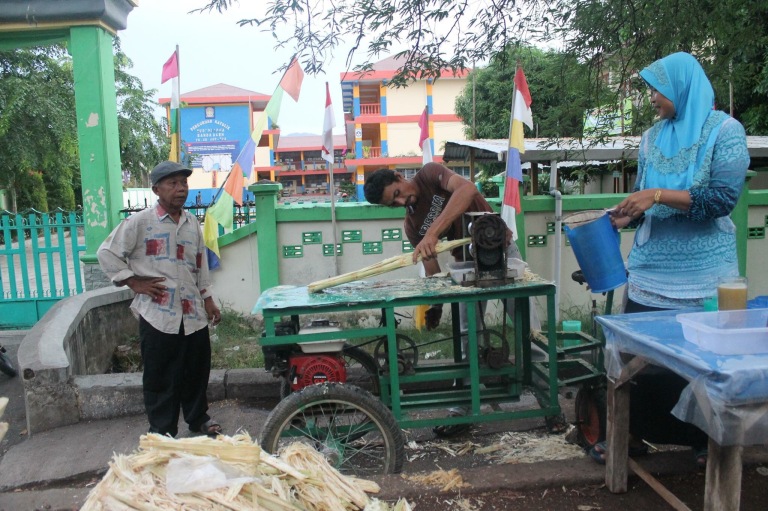

 Bangkok
Bangkok
Then you go to Thailand and everything is new and unknown again. All the progress you made, all the names of the food you learned, your sense of what is cheap and expensive: It is all gone. You are back to square one. But this time you are in the center of a tornado. Bangkok is huge. It is crowded. It is loud. It is messy. Chinese and Japanese and Malaysian and Korean and Thai live next to each other, mingling and mixing their styles and flavours without much worry. 

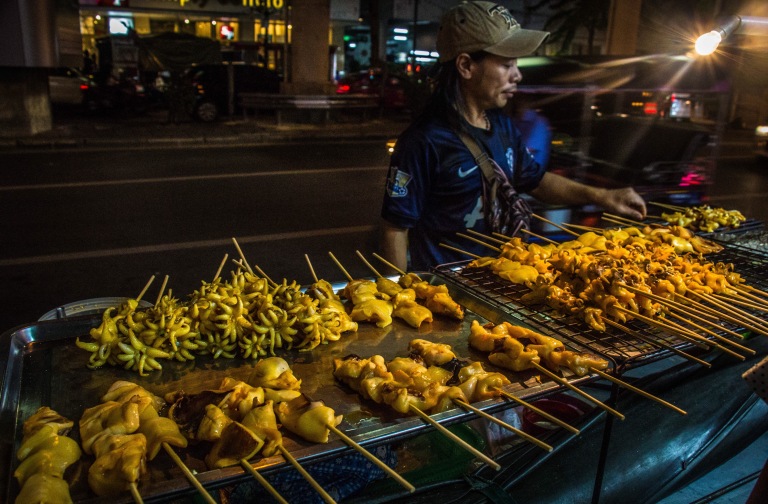



 Foreigners (people) and guavas (fruit) are both referred to with the word Farang. And Farangs fill the markets. There are tons of fruit: mangosteens and rambutans are commonplace desserts, sweet and juicy and refreshing in the city’s heat. Crickets, worms, spiders and scorpions are available to the more adventurous.
Foreigners (people) and guavas (fruit) are both referred to with the word Farang. And Farangs fill the markets. There are tons of fruit: mangosteens and rambutans are commonplace desserts, sweet and juicy and refreshing in the city’s heat. Crickets, worms, spiders and scorpions are available to the more adventurous. 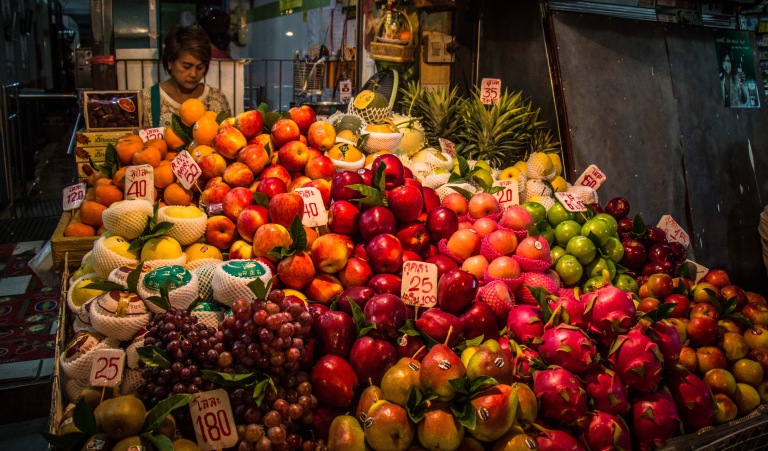


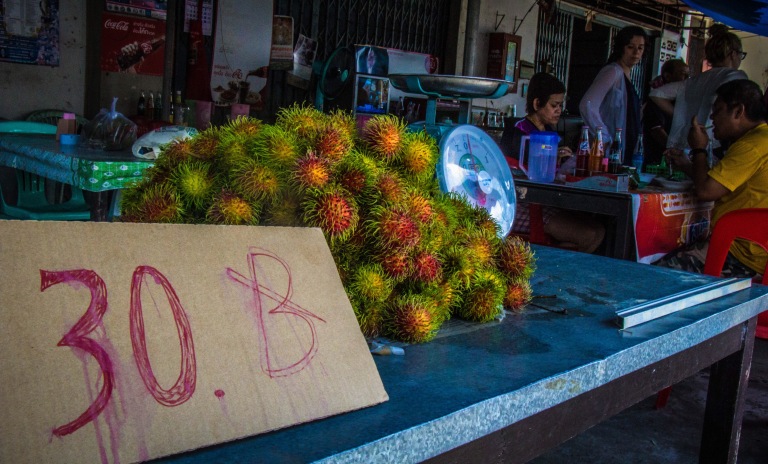
 Everything you could even remotely consider edible is available somewhere in Bangkok for sure. And most of it is delicious.
Everything you could even remotely consider edible is available somewhere in Bangkok for sure. And most of it is delicious.
Khao Lak
Seafood doesn’t get any fresher than in little Khao Lak. We visited beach side restaurants where our lovely hosts ordered our food, introducing us to the delights of Tom Yum Kung (spicy shrimp soup), Som Tam (Papaya salad), Tom Kha Gai (Coconut and chicken soup), Mou Manaw (Pork and lemon), and a flurry of shellfish and noodles that are too many and too diverse to keep track of. 
 (There were snails in those shells, but now they’re gone cos they were really yum).
(There were snails in those shells, but now they’re gone cos they were really yum).
We were spoiled and stopped worrying about picking our meals. Just because we knew we had local help that could not go wrong. “Aroy” (Thai for delicious) quickly became our new “Enak”.  Chiang Mai
Chiang Mai
I write this in Chiang Mai. It is our last stop. The food and the drinks here are nothing short of amazing. I’ve been told there is something called Kaow Soi which I need to try: Noodles and egg in some sort of curry. Cheap, delicious Pad Thais are everywhere to be found in the streets. Coffee culture is alive and thriving in this quirky, cool mountain city. We have been treated to hot pots where you mix and match all your food into a tasty broth, and to a traditional meal by the Hmong community where fresh bamboo shoots are mixed with chicken and pork. 
 There are only a few days left, and I know I have barely scratched the surface of what there is to be discovered in these 2 countries. I better get out and make the most of it – but I’ve promised myself I’ll be back to enjoy them again.
There are only a few days left, and I know I have barely scratched the surface of what there is to be discovered in these 2 countries. I better get out and make the most of it – but I’ve promised myself I’ll be back to enjoy them again.
I love food. I was raised to appreciate the sacrifices of different animals lives, the months and years of patient growth for each vegetable so that you can put them in your plate. I was taught that when people offer food for you, you eat it and you thank them. You don’t waste it, you discover it and you connect with people through it.
Food, I have found, is one of the best ways around to make friends, even if you can’t really speak to each other.
JMP
